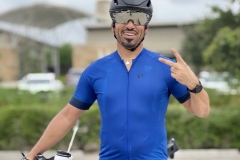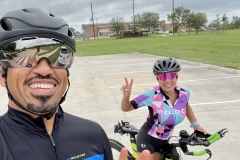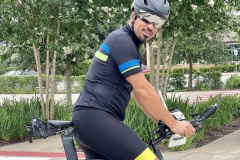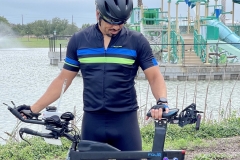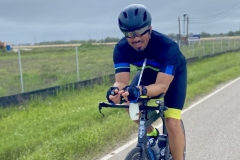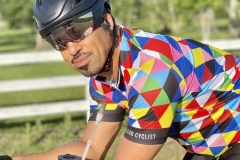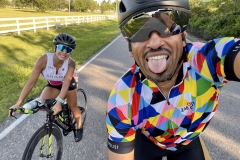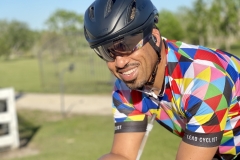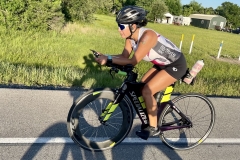Training evolution
Johnny has added high-intensity cycling intervals to my training plan and I love doing them.
For the past year and a half, he’s been focusing on developing my cycling basics. Building an aerobic base, developing my ability to feel and hold a cadence as well as staying in the aero position for extended periods. Oftentimes I would become frustrated when I couldn’t keep up with the group. I wanted to be faster and stronger.
Trust the plan. Trust the plan. Trust the plan. Trust the plan.
Those words echo through every endurance athlete’s mind. Probably every athlete of any type. Progress can be slow, require patience and disciplined consistency. Meaningful growth is measured over months to years, not days or weeks. Since we train daily and think about training in weekly increments, so becoming impatient seems to be a part of the process. Couple that with the fact that the majority of training sessions are done at low intensity and there are days when I question if my coach is fucking with me. I wonder if he’s just prolonging things to make more money 💴 😂. Sometimes I forget that my goals are big, never-ending, and to properly prepare requires a shit load of training. The mental merry-go-round can be crazy.
Now that I’ve built an adequate base of fitness – evidenced by completing a full distance Ironman– it’s time to develop speed. I do want to complete my next Ironman faster than the previous one.
Side note: the goal has changed.
Previously, I wanted to complete an Ironman triathlon. Now, I want to complete one faster than the last one. There is no “can I do that” question. It’s now, “how fast can I do that”?
Ready, set, speed
To get faster, one common training technique is executing high-intensity intervals. This type of training session is short – 1 hrs or less. First, I warm up for 10 min, then execute a high-intensity push for a limited time, typically 1 min to 5 min. Then, I recover at a lower intensity for a few min and repeat the process multiple times. Finally, I spend 10 minutes cooling down. Of course, there are a bazillion variations, but they all have that approach in common.
This type of training builds intense bursts of power and trains the athlete what it feels like to hold it. It also develops a sense of how long the effort can be held, building the confidence that only comes with experience. Over time the intensities, the number of repetitions, and the duration of each interval increase. They are very difficult and physically draining, but the results are real. Plus they add a welcome element of variety to training.
Now, Johnny has added intervals to both cycling and swimming. Running will wait until I complete Ironman Florida. He suggests that I focus on dropping weight to make the running speed work easier on my body. Dropping weight and Ironman preparation are not compatible, so I’ll work on swim and bike speed until November. Afterwhich I’ll clear the race calendar until the spring of 2022 and lean out while working on running speed in the interim.Initially, doing the cycling intervals was intimidating and very challenging to execute. However, they’ve been on the plan every week, and I’ve gotten better. Cruz also joins me and has been benefitting from them too. Now, both of the mid-week bike sessions are intervals. The long, low-intensity rides are left for Saturday morning. The first session of each week is a zone 2 (moderate/easy) + Zone 3 (moderate/tough) effort which is challenging. The second session is even more intense. It’s zone 2 + zone 4 (hard) efforts, basically all out for 5 minutes then recover for 5 minutes and repeat 4 times. I always finish drenched in sweat and feeling spent 😅🥵.
I think most of the local triathletes and cyclists do their interval sessions indoors on a stationary trainer because it’s much safer. I began that way, but simply don’t like training indoors. I’ve found a set of farm roads that have no traffic lights and only one stop sign. Traffic is very light and can be seen at a great distance. Also, the roads are flat and mostly straight so I can focus on managing my effort and not having to slow down for curves or turns. It’s a great location to hold the hard efforts while remaining relatively safe. I usually don’t do them alone, so that’s an added safety bonus.I love these and look forward to doing them each week.

